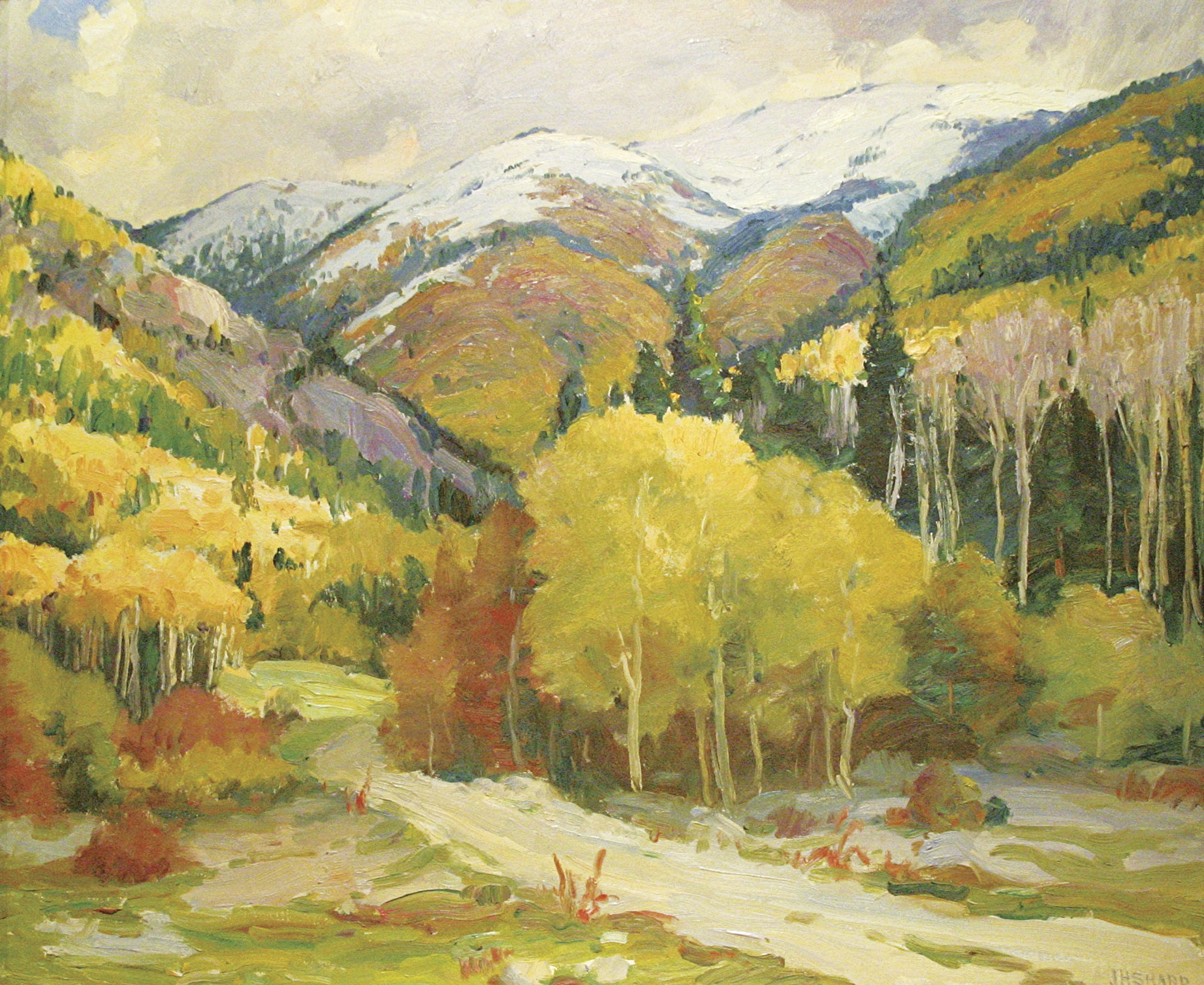
01 Aug Perspective: Joseph H. Sharp
From the earliest cave and cliff dwellers to the carvers, potters and weavers of the Pueblo and Spanish settlements, New Mexico’s Taos area has always been home to artisans. But something happened in the late 1800s — a rebirth or renaissance of the arts — that turned the area into a mecca for the inspired and creative. One catalyst who sounded the call, Joseph Henry Sharp, was so united with the artistic life, and so committed to recording the history of a vanishing culture, that he helped to create a new one.
In 1883, when trains were young and horse-drawn rigs the mode of transportation, Henry Sharp first experienced the lure of the Territory of New Mexico. He rode the Atchison, Topeka and Santa Fe steam engine to Albuquerque from Cincinnati and hopped the spur to Santa Fe. On that trip he heard of the pueblos and, 10 years later, returned to find them. Sharp left his bride of one year, Addie Byram Sharp, in Santa Fe, where he met up with John Hauser, a fellow art teacher from Cincinnati. In a rented buckboard wagon, with paint boxes and easels, they bounced along an impossibly dusty, bone-jarring trail in search of the pueblo to the north.
If it was expansion of experience he was seeking, Henry Sharp found it there. The landscape was vibrant with light and color and the Taos Pueblo was the model of a simple, poetic, harmonious outgrowth of the primitive earth. On that trip in 1893, Sharp painted “The Harvest Dance of the Pueblo Indians”, published in Harper’s Weekly with the story he wrote telling of the preparations and ancient rites. He described the chanting, thumping drums, garments, color and the energetic stamping of the men and “women tripping lightly, their bodies constantly swaying in graceful sinuous motion.” It was those details, the emotions of the sacred dances and mysterious ceremonies, that Sharp recorded for all time.
That trip launched him on the path that would become his passion, his obsession, his great lifetime achievement: painting — from both an artistic and anthropological standpoint — the American Indian and a lifestyle that was becoming obsolete.
Sharp and his wife, a finished pianist, were both refined and accustomed to the culture and high society of the finest European art centers where he pursued his education for eight years. Prior to that, he studied for eight years at the McMicken School of Design (admitted at the age of 14) and the well-known Cincinnati Art Academy where he later taught. At the time, Cincinnati was one of the most cultured cities in America. Spirited and adventurous, the Sharps left it all behind and traveled west in pursuit of his quest. Tracing Sharp’s migratory path across the Atlantic, and from the East Coast to Indian country on ships, trains, stagecoaches and wagons, suggests the vast scale of the life he lived.
After the initial trip to paint the Pueblo Indians in the summer of 1893, the Sharps continued to spend three to four months each summer with them. He wrote that he found them more and more interesting, but that they weren’t successful models because it was difficult to get them to unbend. At first they’d “take a pose of majestic and often ludicrous stiffness.”
His favorite model at that time, Soaring Eagle, sought Sharp out. The Indian had walked three miles from his pueblo to their adobe hut one morning, looked in the windows, tried the door and then sat down to wait. When Sharp came out the man said, “How,” pulled two eggs from the folds of his blanket and offered them for five cents. Their friendship and Soaring Eagle’s service as a model began. Sharp described him as “a pure type of Indian in face, beautiful in figure, stolid and as inquisitive as a child in character.”
Sharp returned to Paris to study in 1894, and met two American artists: Ernest Blumenschein and Bert Phillips. He relayed the tales of the land, the light and the people he had found in the Territory of New Mexico near Taos. Blumenschein later wrote, “I remember being impressed and I pigeon-holed that curious name in my memory with hope that some day I might pass that way.” In August of 1898 as Sharp was leaving Taos to return to his teaching position in Cincinnati, Blumenschein and Phillips were passing through the area by wagon from Colorado to Mexico on a painting trip. Their wagon wheel broke north of Taos and the repairs forced them to slow down, absorb and appreciate the area. Phillips moved to Taos and Blumenschein came back regularly, eventually settling there with his wife, also an artist, and their daughter.
In the spring of 1902 on the streets of New York, Irving Couse, another classically trained artist from the finest schools, told Blumenschein of the difficulty of obtaining willing models among the American Indians in Washington. Blumenschein described Taos and the Couses arrived in Taos two weeks later. The word continued to spread and throughout the late 1800s, some of the most progressive artists in the United States began to discover this remote western region.
Sharp would later settle in Taos, but he felt an urgency to paint the Indian cultures to the north which were vanishing at a more rapid rate. His first love was painting the Indians of Montana, especially those who had fought in the Battle of the Little Big Horn. It was in their eyes and on their faces that he found the history and the stories he was compelled to tell.
The year 1901 marked a turning point in Sharp’s career. The Bureau of American Ethnology purchased 11 paintings for the Smithsonian. Then, at the Pan American show in Buffalo, New York, Mrs. Phoebe Apperson Hearst bought 79 Indian portraits. She later acquired eight more of Sharp’s paintings and agreed, under contract, to purchase 15 each year for the next five years. Those two events provided Sharp the financial security to resign from the Cincinnati Art Academy and accept, full time, the romance and reality of being an artist of the historic West.
Crow Agency in Montana became J.H. Sharp’s headquarters, where he painted in the fall and winter until 1910. Summers were spent in Taos. Wherever he found the American Indian, he painted the dignity, beauty and nobility of a race and treated them with honesty and friendship.
Mr. Sharp had obstacles to overcome besides the challenges of travel and roughing it in the West in those early days. He had been deaf since the age of 12 from a childhood accident and communicated on a small notepad he kept in his pocket; conversations shared pages with sketches. He had a wonderful sense of humor and nurtured relationships with friends and patrons through written correspondence. A friend from Montana, Carolyn Riebeth, wrote, “His exuberant pleasure in the life which he led, and his evident good wishes toward all who crossed his path, attracted people to him; he had scores of casual friends and some very devoted ones.”
During his years out West, he was still very much a presence in the art circles and shows back East. In a yellowed envelope addressed to him from Burrelle’s Press Clipping Bureau in New York, postmarked December 28, 1906, were clippings from The Chicago Times-Herald, The Cincinnati O. Enquirer, and The Washington D.C. Star with glowing reports of his art in various exhibits. One clipping said of Sharp, “No other artist has studied the Indian so thoroughly, and there can be no doubt but that these portraits and studies will have an unusual value …”
In 1906 the Sharps bought a house in Taos and continued to spend the fall and winter in Montana. In keeping with their expansive, adventurous lifestyle, they also traveled to Asia, Egypt, Africa and South America. Life was exciting, his paintings were selling and then tragedy occurred. After a prolonged illness, his wife, Addie, died. Sharp later married her sister, Louise, and his life eventually continued much as it had before. Instead of spending winters in Montana, they spent them in Pasadena or Hawaii; but Taos became the home which Sharp called, “Our first love and stomping ground.”
In his book Teepee Smoke, archeologist, writer and Sharp collector Forrest Fenn quotes Henry Sharp’s enthusiastic letter to J.H. Gest: “… others are coming, so there may be a Taos Colony a la Barbizon yet!”
Indeed there was a Taos Colony of Artists of which Sharp is considered the founding father. It was organized by Bert Phillips and Ernest Blumenschein at the home of Doc Martin where the Historic Taos Inn is located today. The original six artists (later 12) were: Henry Sharp, Bert Phillips, Ernest Blumenschein, Oscar Berninghaus, “Buck” Dunton and Irving Couse, their first president. His granddaughter, Virginia Couse Leavitt, said the artists were very good friends. They created their own community and had dinners, dances, music and masquerades in which they all took part.
A 1916 article in Art and Archaeology tells of them:
Virile and prophetic is the new note in American art by a group of painters who are making Santa Fe and Taos their chosen field. Among these prophets of an American renaissance — founders of a Santa Fe-Taos school in art — are men whom the world hails as masters, Robert Henri, J.H. Sharp, Julius Rohlshoven, and E.L. Blumenschein, and a score of others almost, if not quite, as mature and famous … are blazing new paths to reach their high ideals.
Joseph Henry Sharp, fresh from his triumphs in Paris, at the beginning of this century, established himself in an old Penitente church at Taos and out of it brought canvases that placed him at the head of those who with the brush recorded the lineaments as well as the inner life of the American Indian.
Sharp’s first studio, a chapel built by the Luna family in 1835, was sometimes mistakenly referred to as a Penitente Morada because of its occasional use for their ceremonies. (The Penitentes were members of a religious sect who disciplined themselves by self-flagellation.) The blood is still evident on the rafters today. Mr. Sharp converted the chapel to a studio by adding large louvered windows, a wooden floor and a kiva fireplace. In 1924 J. Pennington wrote that J.H. Sharp had made a studio of an abandoned Mexican adobe church, and though he put in a new floor, Sharp said he did so merely “to keep the dead Penitentes down.”
Couse’s dining room wall was built adjacent to Sharp’s chapel wall. “The two families were thereafter bonded in adobe as well as in friendship,” the Couse Foundation Newsletter reports.
The Taos Society of Artists received wide acclaim. Others heard and came. There became a new culture of art and artistic awareness. In a 1933 article in Touring Topic, Erna Ferguson wrote:
[Taos] is one of the places to which everyone must some day come. All this because Taos is an art colony.
Discovered back in the ’90s by Joseph Henry Sharp, Burt Phillips and E.L. Blumenschein, Taos has gone on ever since attracting more and more painters until now a new painter comes in on every stage.
When the large Sharp collection was purchased by Hearst in 1901, a reporter wrote, “Fame may be a sudden thing at the last, but it is a long time coming, and travels a hard road.” J.H. Sharp worked relentlessly, traveled and lived in a rough country. He laid the cornerstone for the wonderful tradition of the arts that was built in the region.
Joseph Henry Sharp witnessed the passing of a frontier and recorded its history. He surrendered to the call of fire-lit teepees and ancient pueblos; to the allure of American Indian models with superb physiques and deep religious beliefs; and to a time when every moon had its traditional Indian ceremonial, every sunset its dancing worshipers. Recorded in art, the history did not vanish.
- J.H. Sharp at age 50, from a private collection.
- “Taos Indian Girl” | From the collection of Forrest Fenn | Oil on Canvas | 33 x 27 inches
- Black and white sketches from the Forrest Fenn Collection.
- Sharp’s account book from the Forrest Fenn Collection.
- “Landscape — 1894” | Oil on Canvas (1894) | 22 x 15 inches | Taos Art Museum & Fechin House, Taos, New Mexico
- Quote from Sharp’s sketchpad, from the Collection of Forrest Fenn.
- Kiva fireplace and niche of the chapel studio; often seen in Sharp’s paintings.





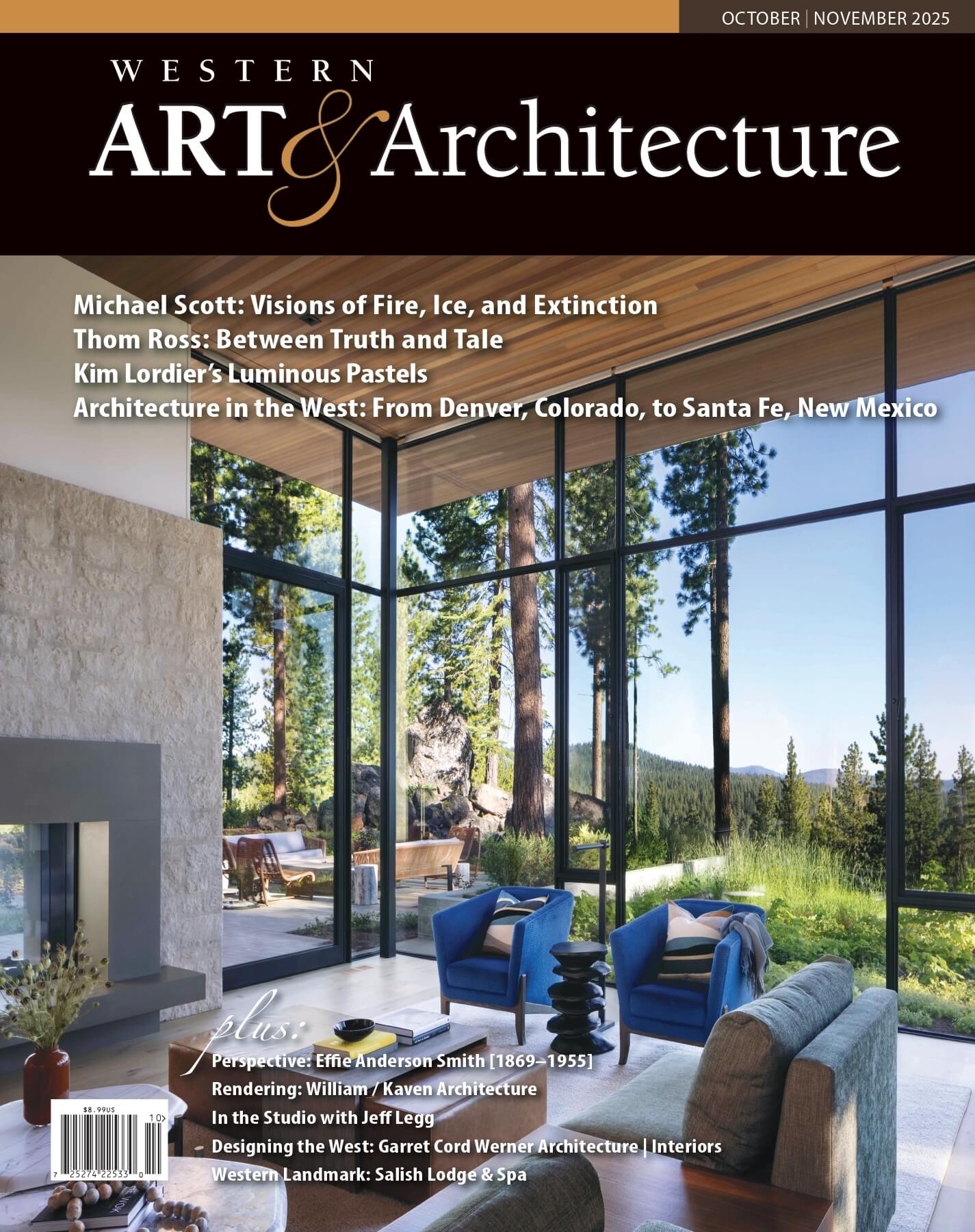

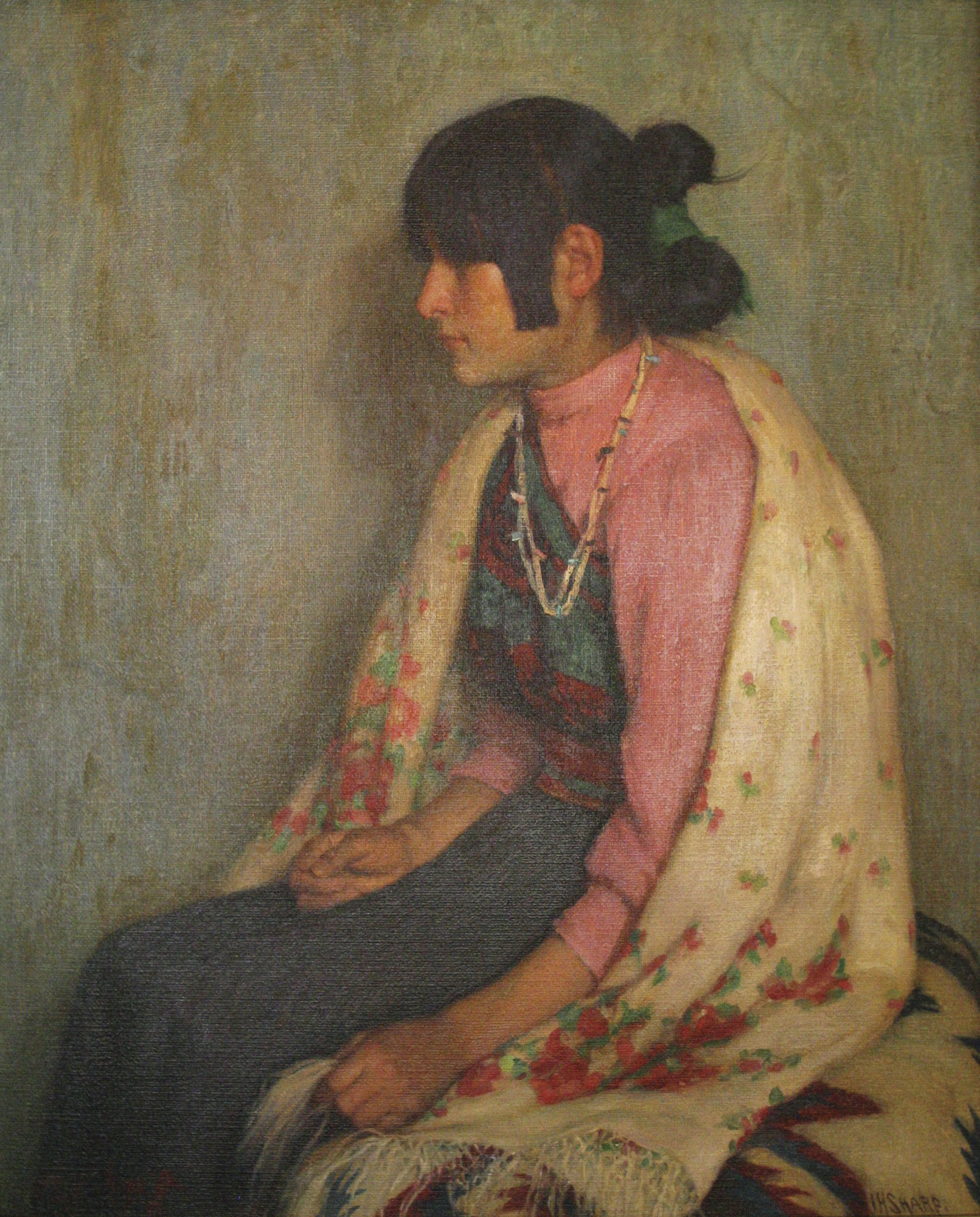

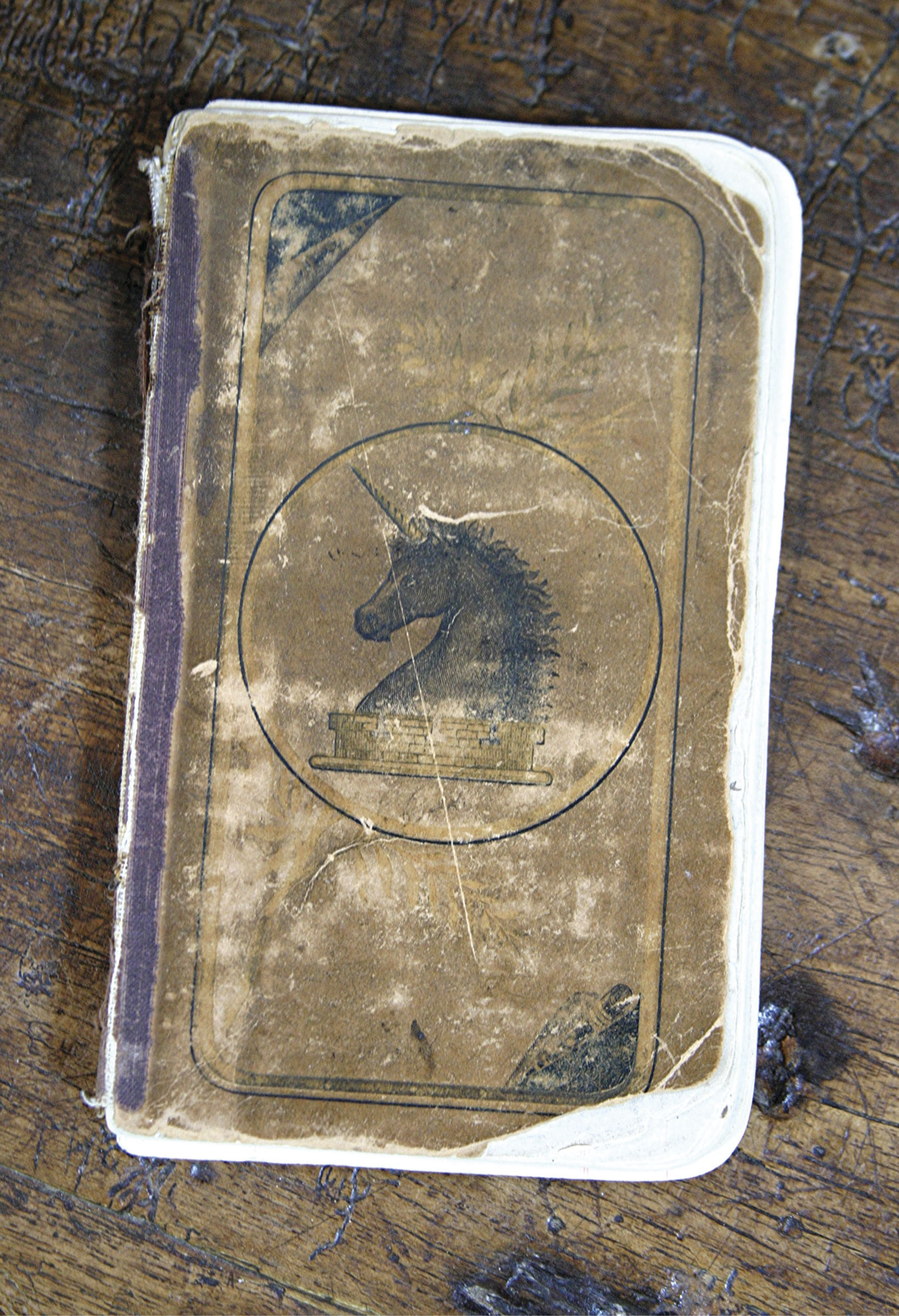
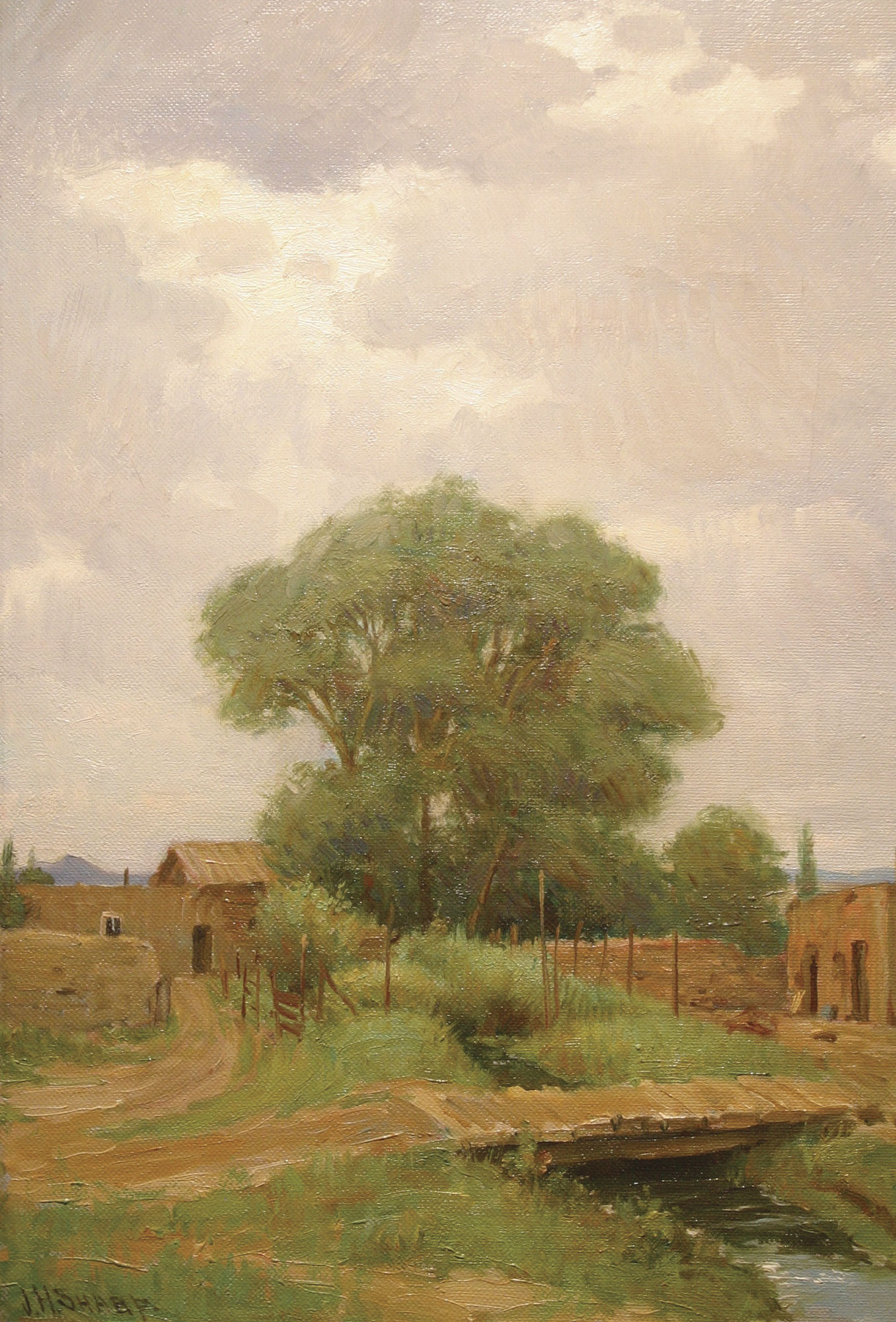
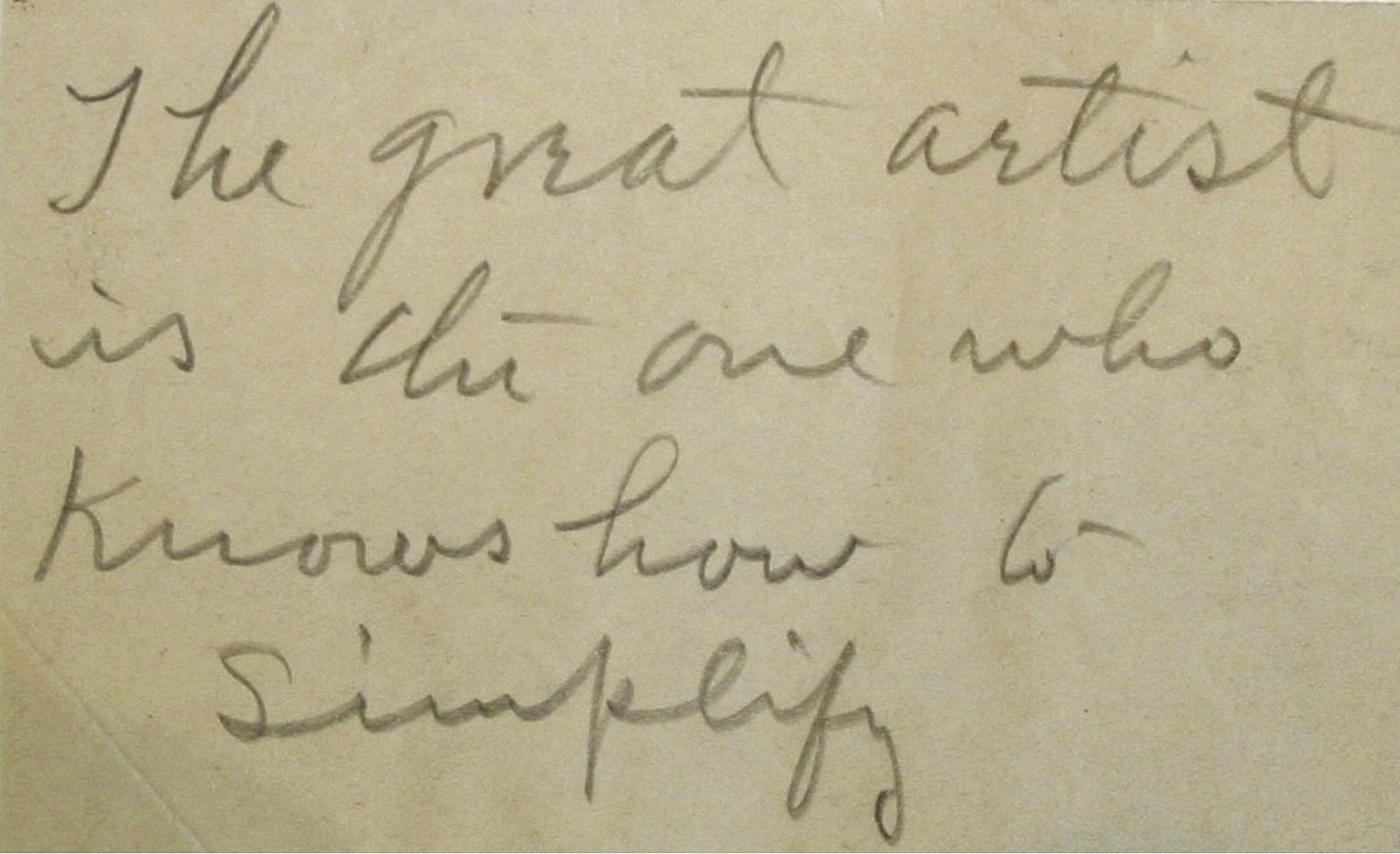
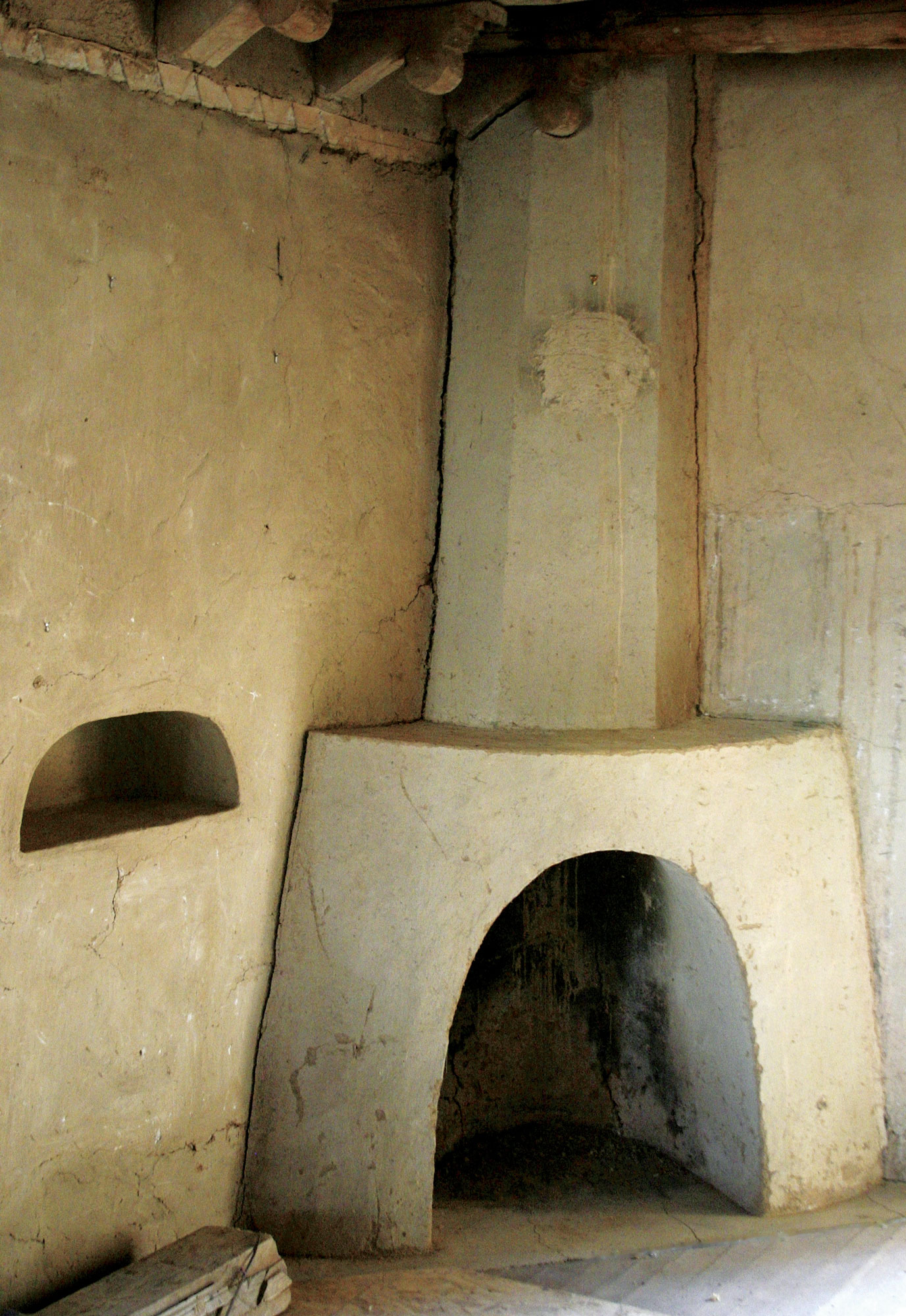
No Comments